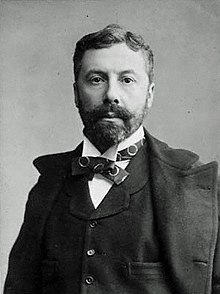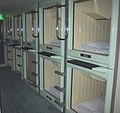Portal:Hotels
The Hotels Portal

A
Hotel operations vary in size, function, complexity, and cost. Most hotels and major hospitality companies have set industry standards to classify hotel types. An upscale full-service hotel facility offers
Recognized articles -
-
en suite bathroom, electricity, and a telephone for each room. It quickly established a reputation for luxury and attracted a clientele that included royalty, politicians, writers, film stars, and singers. Several of its suites are named in honour of famous guests of the hotel including Coco Chanel, and the cocktail lounge Bar Hemingway pays tribute to writer Ernest Hemingway. (Full article...)
-
TheHolocaust.)
The hotel was located between the Kalverstraat (no. 15–17) and the Rokin (no. 14), near the present day Madame Tussauds. Its place is now occupied by the Rokin Plaza, originally an office building, which today houses several fashion shops. (Full article... -
The Landmark was a hotel and casino located in Winchester, Nevada, east of the Las Vegas Strip and across from the Las Vegas Convention Center. Frank Caroll, the project's original owner, purchased the property in 1961. Fremont Construction began work on the tower that September, while Caroll opened the adjacent Landmark Plaza shopping center and Landmark Apartments by the end of the year. The tower's completion was expected for early 1963, but because of a lack of financing, construction was stopped in 1962, with the resort approximately 80 percent complete. Up to 1969, the topped-off tower was the tallest building in Nevada until the completion of the International Hotel across the street.
In 1966, the Central Teamsters Pension Fund provided a $5.5 million construction loan to finish the project, with ownership transferred to a group of investors that included Caroll and his wife. The Landmark's completion and opening was delayed several more times. In April 1968, Caroll withdrew his request for a gaming license after he was charged with assault and battery against the project's interior designer. The Landmark was put up for sale that month. (Full article...) -
TheHilton Hotels in 1955 and operated for over three decades as the Shamrock Hilton, the facility endured financial struggles throughout its history. In 1985, Hilton Hotels donated the building to the Texas Medical Center and the structure was demolished on June 1, 1987. (Full article...)
-


































































